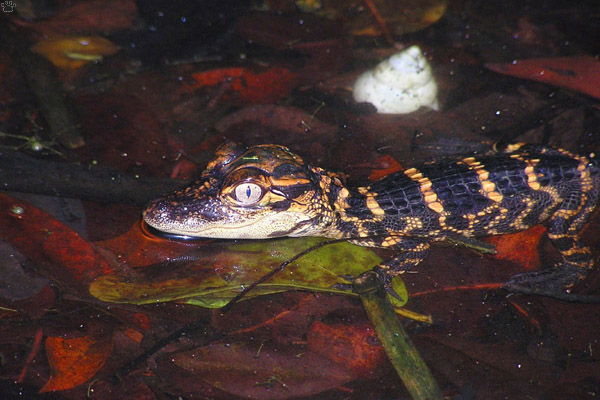
Baby American alligator (Alligator mississippiensis), Everglades National Park, Florida.
Crocodiles part 4: American Alligator (continued)
In early summer, female American alligators build their nests - piles of mud, grass and branches - on dikes, lakeshores, and riverbanks. Most, but not all, females are good mothers: they protect the nest, carry hatchlings to the water, and stay with them for months or even years.
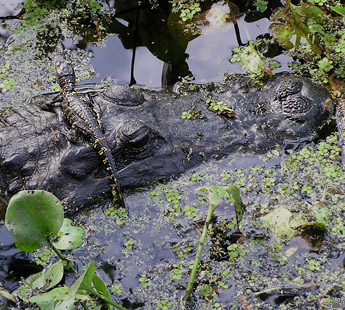 |
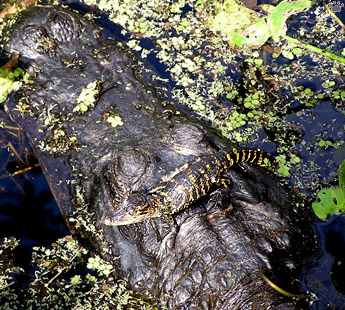 |
| Riding on mommy's head, Corkscrew Wildlife Sanctuary, Florida. |
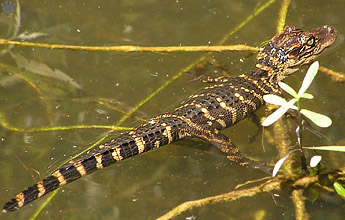 |
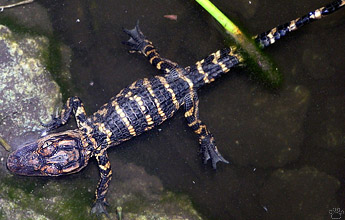 |
| Baby alligators, Lake Kissimmee, State Park, Florida. |
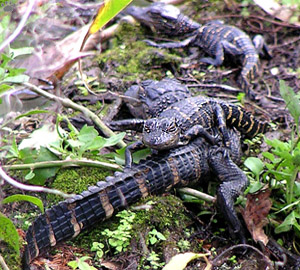
It's not uncommon to see babies of different age in juvenile pods.
CWS, Florida. |
The best chance of survival for abandoned babies is to join another female's pod. Most mothers would accept newcomers, even if they differ in size from their own offspring. |
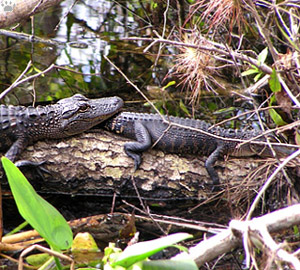
Males grow faster than females, and visibly outgrow them by the age of 3.
LKSP, Florida. |
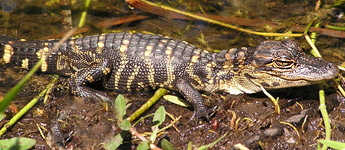 |
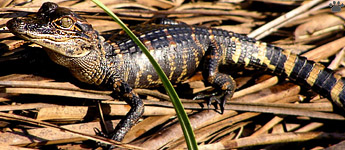 |
| Yearling alligators, Fakahatchee Strand National Preserve, Florida. |
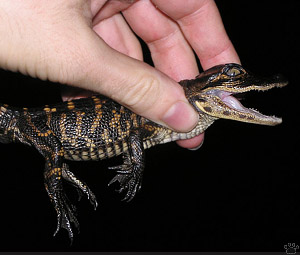
Baby alligator, ENP, Florida. |
If caught, babies emit distress calls. Even though adults would sometimes eat a baby, any gator would valiantly defend any baby that gives a distress call. |
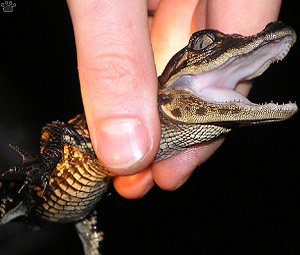
Baby alligator, ENP, Florida. |
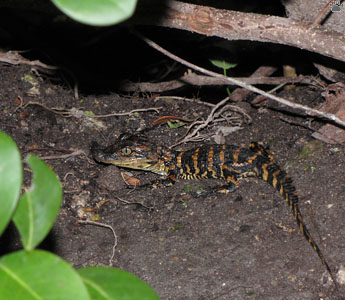
Baby alligator hiding in the forest during drought. ENP, Florida. |
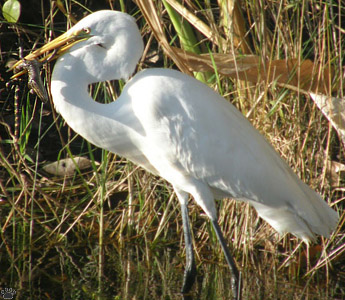
Great white egret with a baby alligator. ENP, Florida. |
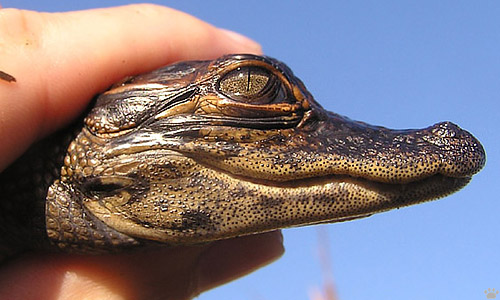
Juvenile alligator, Cape Canaveral, Florida. |
Part 5: Chinese Alligator
Back to Part 3
Home
|